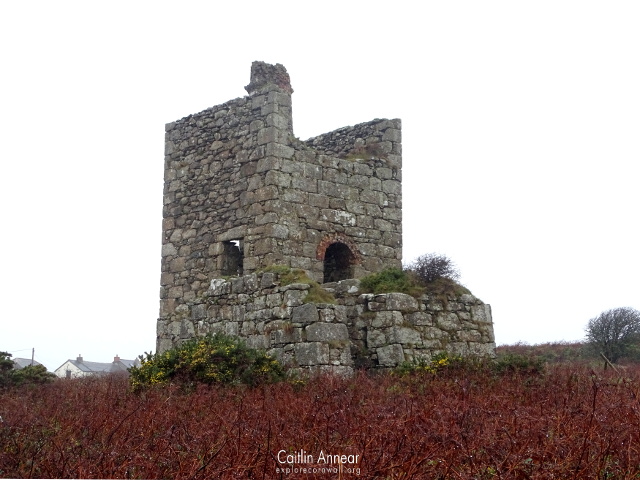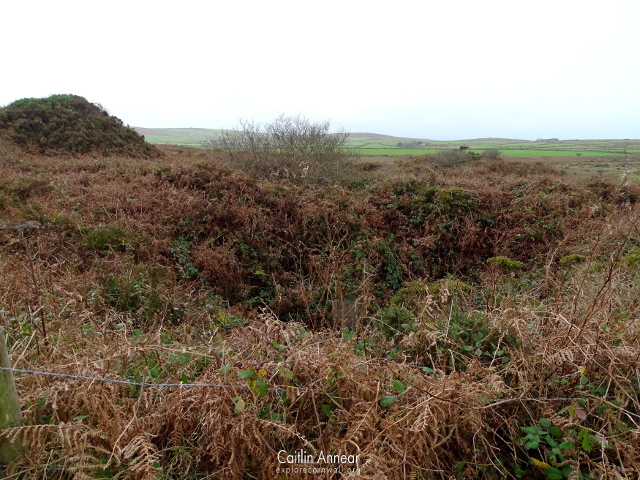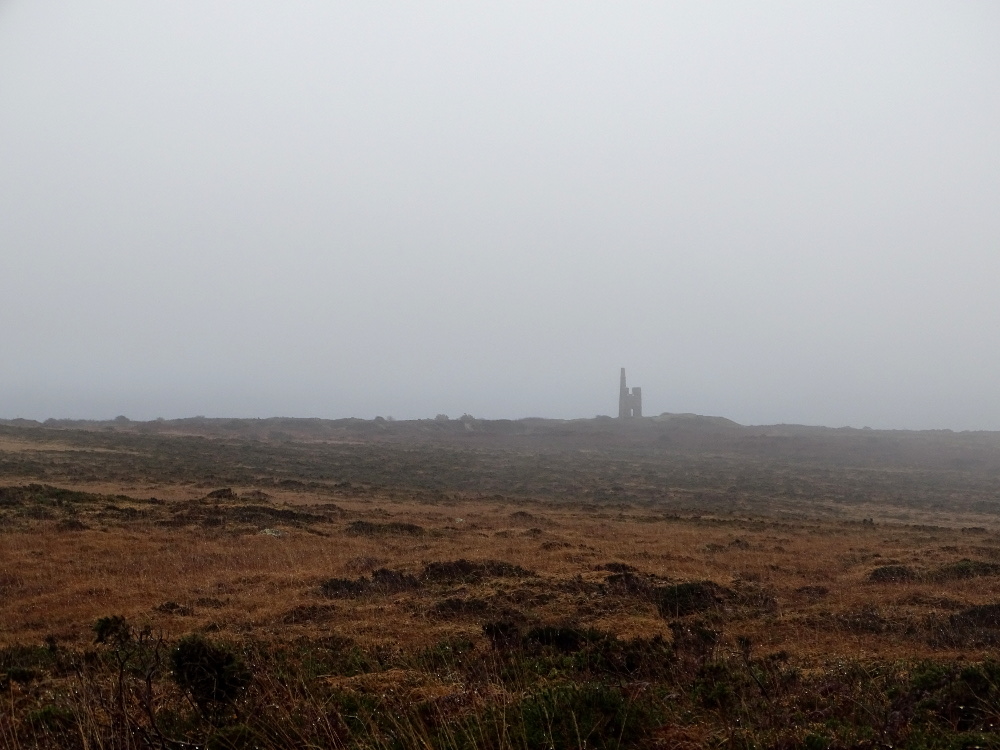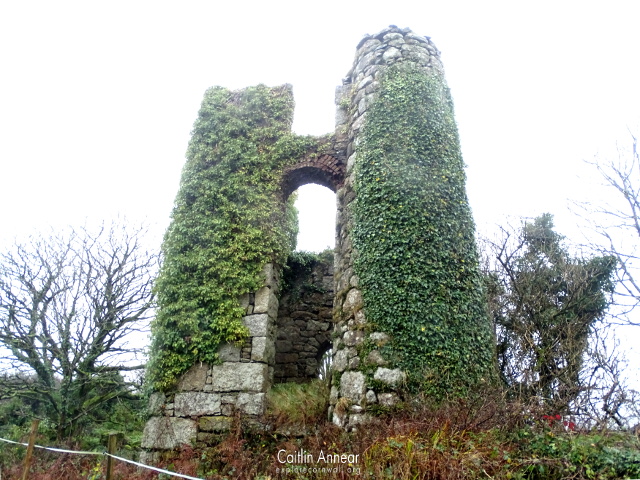One the moors near Madron sit the three remaining engine houses of Ding Dong Mine, possibly the oldest mine in Cornwall.

Ding Dong, like so many other Cornish mines, is actually made up of numerous smaller ventures. The name traditionally only applied to the central sett, with at least fifteen other mines surrounding it making up the later workings. To the east is Providence, Tredinneck and Ishmael’s while in the west were Wheal Boys and Wheal Malkin.
The mines name may originate from ‘head of the lode’, or relate with the bells of Madron church which rang during the mines last shift.

Records for this area began in the 17th century, being predominantly tin streaming and open works.
In 1796 Edward Bull installed an inverted engine on Ding Dong shaft. However, this engine turned out to be illegal, an infringement on Boulton & Watt’s condenser patent. A notice was put on the engine. Richard Trevithick, Ned Bull and William West quickly scampered in to rectify the situation: by turning the cylinder on its head and taking the top off. While this enabled them to circumvent the patent, its unclear how well the engine worked afterwards.
In 1814 the sixteen smaller mines came together as Ding Dong. This was its main period of working in which the majority of remains today come from. Much of its eastern section has been transformed into farm land, but the central and western components can still been seen on the moorland.
Not all sections of the mine were worked at the same time. Twenty years prior to 1862 the Ishmael’s section had been left to flood; it was decided to unwater this area, but when two men were sent down to install siphons they were hurt in an explosion. This was repeated again when the mine manager and four others also ventured down. On the next attempt, Davey lamps were used, designed for flammable environments and methane gas was found, the source of which was rotten timbers.
By 1874 the mine had five engine house and employed 273 workers. This prosperity didn’t last and by 1877 there was little tin ore to be found. Compounded by low tin prices, the mine was closed. Attempts were made to keep it open, but these stopped in 1880. Between 1912-15 and in 1928 the burrows were reworked for short periods, but little else came of this.

Greenburrow (80 fathoms/146m), North Killiow, Tredinneck (135 fathoms/245m), Ishmael’s (62 fathoms/113m), Providence (110 fathoms/201m), Wheal Boys, Highburrow, Bolitho (80 fathoms/146m), West Boys (58 fathoms/106m), Old Engine (10 fathoms/18m), Greenpease (60 fathoms/110m), Jacobine, Croft Reeve (92 fathoms/168m), Ding Dong (80 fathoms/146m), Robin’s (80 fathoms/146m), Hard (62 fathoms/113m), East Killiow, Bank (70 fathoms/128m), South Killiow (45 fathoms/82m), Bosiliack, East, Clymo’s (20 fathoms/37m), South Bussa (30 fathoms/55m), Batten’s (40 fathoms/73m) and Qualk.
Situated in the middle of Land’s End granite this mine is unusual in that the lodes don’t all run in the same direction, but in several, intersecting at various points.
Bedford’s, Robin’s, North Standard, Boy’s, Ding Dong Standard, After’s, Killiow, Malkin, Bosiliack, Good Fortune, Bussa, Bucka, Wigs, Klucky, New, Slide, Ishmael’s, Jilbert’s, Sut Bal, Hughe’s, White, Alex’s, Jacobine, Red, Tallow, Providence, Qualk, Rowe’s, Badger and Caunter.
1814-1878
3,475 tons (3,530,763 kg) black tin
1912
8.5-10 lb (3.8-4.5 kg) of tin per ton (1,016 kg)

There are three engine houses left on the Ding Dong site. The most prominent is that of the 40″ pumping engine on Greenburrow shaft. This is a Harvey’s engine that was originally erected in 1857 on North Killiow shaft, then moved to its current location in 1864. Next is the 25″ whim on Ishmael’s shaft, although it likely wound from others. The last is a 30″ pumping engine which worked Tredinneck and Providence shafts, one of the oldest engine houses left standing in Cornwall having been built in 1825.
The first documented engine is the 1796 28″ ‘pirate’ engine installed on Ding Dong shaft. There was also a 18″ whim sold in 1878 and a 24″ stamps that worked either 40 or 44 heads of stamps.
Access to two of the engine houses is free to all as Greenburrow’s and Ishmael’s whim stand on common land. Tredinneck engine house is on private land, but can clearly be seen from the road.
Parking is rather tricky, with the closest ‘official’ spaces being on the road between Madron and Morvah down by Men-an-Tol, making it a long trek to the engine houses. On the road next to Ishmael’s is a potential spot you could pull in and park, but this was exceptionally muddy on my own visit.
Brown, K. and Acton, B. (2007) Exploring Cornish Mines: Volume Two. 2nd edn. Truro: Landfall Publications.
Dines, H. G. (1956) The metalliferous mining regions of south-west England. British Geological Survey.
Jennings, H. R. (1936) Notes on the History of Madron, Morvah & Penzance.
Nance, D. and Brown, K. (2014) A complete guide to the engine houses of West Cornwall. Gloucestershire: Lightmoor Press.


